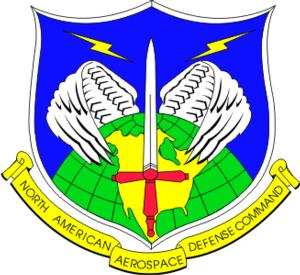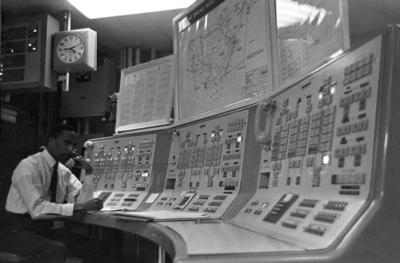Governments Discuss Future Of Joint Military Air Defense
More than a half century since it was established to confront the Cold War threat, North American Aerospace Defense Command is at a new crossroads as officials in the United States and Canada determine the capabilities it will need to confront emerging challenges and threats in the decades ahead. Members of the Permanent Joint Board of Defense, the highest-level defense and security forum between the two countries, discussed the so-called "NORAD Next" concept during their meeting in Colorado Springs, CO, last month, Royal Canadian Air Force Lt. Gen. J.A.J. "Alain" Parent, NORAD's deputy commander, told American Forces Press Service.

The discussion was a first step toward a broad analysis to identify what threats and challenges the United States and Canada will face in the 2025-to-2030 timeframe -- and what steps need to be taken now to prepare for them, Parent said.
NORAD Next is largely a vision at this point, Parent emphasized, and any changes to the binational NORAD agreement would require both countries' approval. But vast changes in the security landscape have produced broad agreement that NORAD must continually evolve to meet challenges to North America, he said. Throughout its history, adaptation has been one of NORAD's hallmarks, enabling it to remain relevant even as the geostrategic environment has changed, Parent noted.
The United States and Canada formed North American Air Defense Command in 1958, merging their air defense capabilities to provide a continental-scale ability to detect and intercept Soviet bombers, presumably carrying nuclear weapons, explained Lance Blyth, the NORAD command historian. That same framework -- warning systems that ran across Canada and Alaska, fighter bases with interceptor aircraft and a command-and-control system that tied them together and with national command authorities -- adapted as intercontinental ballistic missiles became the more pressing threat, Blyth said.

This expanded mission led to NORAD's name change in 1981 to North American Aerospace Defense Command. The command continued to provide aerospace warning and control for North America after the fall of the Berlin Wall, but also began to contribute its capabilities to counter-drug missions, predominantly focusing on airborne trafficking into the United States and Canada. NORAD's sensors and interceptors supported this new law enforcement mission, providing intelligence to law enforcement agencies and serving as a catalyst for the close interagency collaboration that underpins NORAD's operations today, Blyth explained.
The 9/11 terrorist attacks shook NORAD to its very core, challenging the bedrock assumption on which it had been founded: that an attack on either of the two countries would emanate from outside their borders, he said. Within hours of the attack, NORAD already had the go-ahead to stand up Operation Noble Eagle. Under this ongoing homeland defense mission, NORAD monitors and intercepts aircraft of interest within both U.S. and Canadian territory, and provides security support for major events ranging from G8 summits, political conventions to even the Super Bowl.
Operation Noble Eagle represented a sea change at NORAD, broadening its focus for the first time to address both internal as well as external threats against North America. "We weren't postured to be looking inside the continent as we are today," Royal Canadian Air Force Brig. Gen. A.D. "Al" Meinzinger, deputy director of strategy in the NORAD and U.S. Northern Command policy and plans directorate, told American Forces Press Service. "But as a consequence of 9/11, we stood up a whole enterprise to be poised and positioned to deal with the internal threats," he added. "And we all understand that we need to be ready to respond on a moment's notice."
Another major step in that evolution took place in 2006, when U.S. and Canadian authorities expanded NORAD's mandate to address seaborne threats. This maritime-warning mission applies the command's capabilities to identify and track vessels of interest approaching either country's coast, and passing that intelligence to authorities that would intercept them. More than a decade after 9/11, NORAD officials are widening their field of vision yet again as they discuss roles the command could play in addressing threats from a broad array of domains: air, space, sea, land and even cyberspace. They also are working to identify what warning systems and processes will be required to address these threats, particularly as the life cycles of many of the current radars expire in the 2020-2025 timeframe.

"We need to think about what is beyond 2015, what the strategic environment will be, and what we need to be doing to move the command into that future," Meinzinger said. NORAD Next, he said, will be the bumper sticker for that next big step in NORAD's evolution. "NORAD Next will ensure that NORAD remains forever relevant and ever evolving," Parent said. "If we want to outpace the threats, we have to think in advance of them.
"The important thing," he continued, "is that we maintain relevancy and don't get surprises. The stakes are too big for our two counties to get surprised."
(Images provided by NORAD. Top CMAFS 1967. Bottom Russian Tu-95 bomber intercepted by NORAD)
 Classic Aero-TV: The Switchblade Flying Car FLIES!
Classic Aero-TV: The Switchblade Flying Car FLIES! ANN FAQ: Q&A 101
ANN FAQ: Q&A 101 ANN's Daily Aero-Term (04.12.24): Discrete Code
ANN's Daily Aero-Term (04.12.24): Discrete Code ANN's Daily Aero-Term (04.13.24): Beyond Visual Line Of Sight (BVLOS)
ANN's Daily Aero-Term (04.13.24): Beyond Visual Line Of Sight (BVLOS) ANN's Daily Aero-Linx (04.13.24)
ANN's Daily Aero-Linx (04.13.24)





